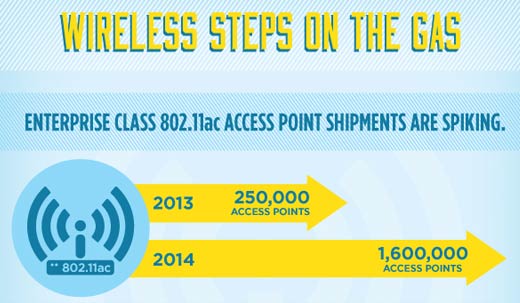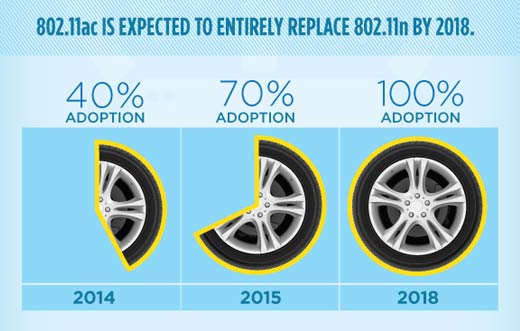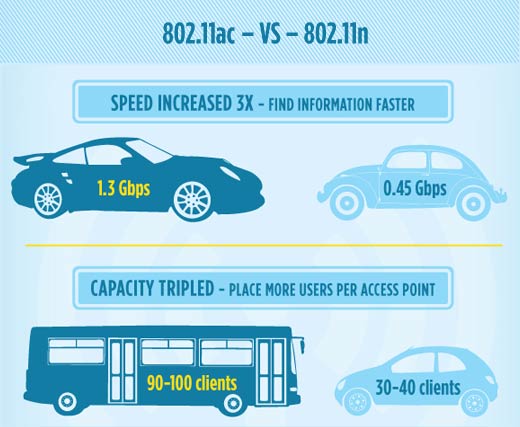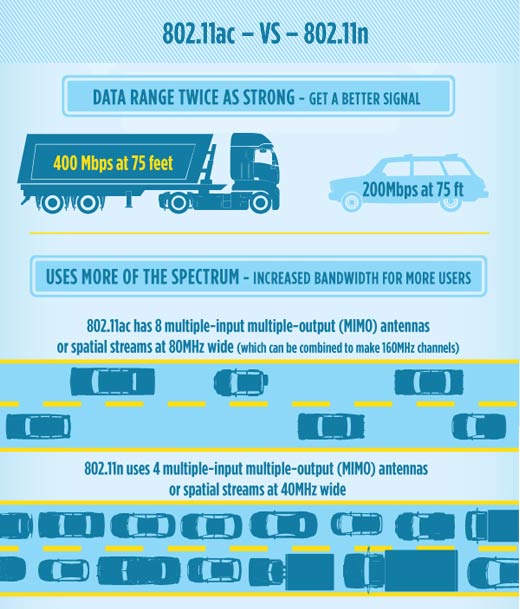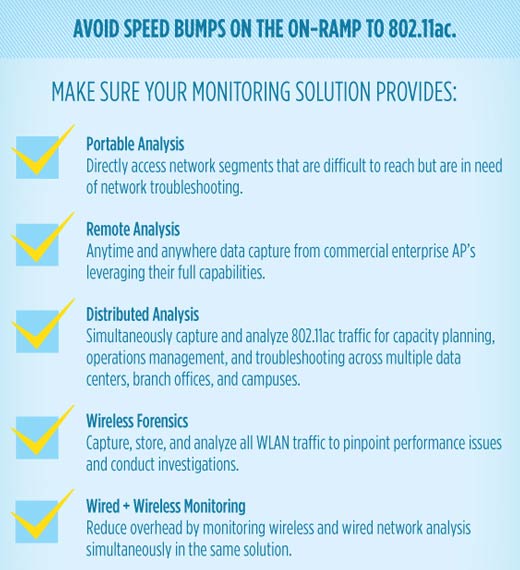With the invasion of mobile devices in the enterprise, organizations are struggling to meet the demands placed upon their networks. On top of that, ever-changing Wi-Fi standards (n-> ac waves 1 through 3 and now talk of z) make it difficult to keep up, and know when to upgrade. In this slideshow, WildPackets defines the current state of affairs with Wi-Fi, outlining the path to adoption of 802.11ac and describing possible pain points and how to fix them.
WildPackets, Inc., founded in 1990, develops hardware and software solutions that drive network performance, enabling organizations of all sizes to analyze, troubleshoot, optimize, and secure their wired and wireless networks. WildPackets products are sold in over 60 countries and deployed in all industrial sectors.
Putting the Super in Information Superhighway
Click through for more on the current state of Wi-Fi and how 802.11ac can help, as identified by WildPackets.
Wireless steps on the gas
Enterprise class 802.11ac access point shipments are spiking. In 2013, there were 250,000 access points. By the end of 2014, it is expected that there will be more than 1,600,000, a more than 6x increase over 2013.
Looking toward 2018
Current 802.11ac adoption rates are at about 40 percent, but by 2018, 802.11ac technology is expected to completely replace 802.11n.
As fast as wired networks
It’s no wonder that 802.11ac is eclipsing 802.11n. With speeds as high as 1.3 Gbps, 802.11ac access is as fast as wired networks, which come in at about 1 Gbps.
802.11ac versus 802.11n
Given that 801.11ac is as fast as wired networks, it’s not surprising to see that it’s leaving 802.11n in the dust. With speeds 3x faster (1.3 Gbps vs. 0.45 Gbps), finding the information you’re looking for is easier and significantly faster. Additionally, an 801.11ac access point nearly triples capacity, allowing more users per access point.
802.11ac versus 802.11n
802.11ac also has a distinct advantage when it comes to signal strength and data range. 802.11ac provides 400 Mbsp at 75 feet, while 802.11n provides only 200 Mbsp at the same distance. Additionally, 802.11ac has eight multi-input multi-output (MIMO) antennas or spatial streams at 80 MHz, which allows for a significant increase in user bandwidth.
Avoiding the speed bumps
Thinking of moving to 802.11ac? Make sure your monitoring solution provides the following:
- Portable analysis: Directly access network segments that are difficult to reach but are in need of network troubleshooting.
- Remote analysis: Anytime and anywhere data capture from commercial enterprise APs leveraging their full capabilities.
- Distributed analysis: Simultaneously capture and analyze 802.11ac traffic for capacity planning, operations management, and troubleshooting across multiple data centers, branch offices, and campuses.
- Wireless forensics: Capture, store and analyze all WLAN traffic to pinpoint performance issues and conduct investigations.
- Wired + wireless monitoring: Reduce overhead by monitoring wireless and wired network analysis simultaneously in the same solution.



